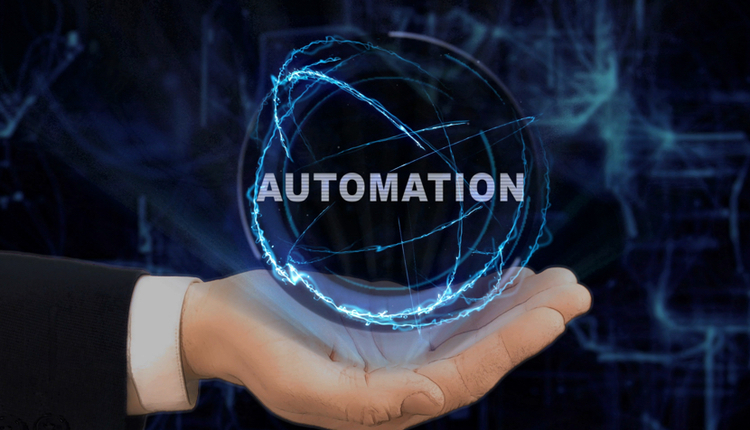
Image by: Room_76_Photography, ©2017 Getty Images
IDC defines digital transformation (DX) as the use of "3rd Platform" technologies (cloud, mobility, data analytics, and social business) to create value and competitive advantage through new offerings, new business models, and new relationships. In addition to gaining critical operational efficiencies, a principal outcome of DX is improved customer experience. We predict that worldwide spending on DX technologies will grow to nearly two trillion dollars in 2019 and that two-thirds of CIOs in the Global 2000 will put DX at the heart of their corporate strategy.
A cornerstone of DX is transforming content-centric workflows, especially those related to interactions with customers as well as other external stakeholders (e.g., investors, partners, suppliers). Innovative technologies from both established vendors and new entrants are enabling modern approaches to deploying and managing these workflows, offering organizations opportunities to drive competitive differentiation as well as improve bottom line results. It is critical for organizations to consider applying a chunk of that two-trillion-dollar investment toward improved business processes involving customer interactions, many of which are content-centric.
What Is a Content-Centric Workflow?
We define content as “collections of paper-based or digital works in any medium or format" and workflow as "the progression of steps that comprise a work process and create or add value to the organization's activities." Content-centric workflows are dependent on tasks that generate, consume, or otherwise act on content.
IDC research has looked at the benefits of deploying technology to automate and streamline content-centric and document-intensive workflows, with a focus on eliminating paper and connecting disconnected systems. In one study, line of business executives and managers estimated that fully automating their document-driven business processes would yield 36% increase in revenue, 30% cost reduction, and 23% reduction in risk. Other studies point to more than a 30% reduction in time spent on document-intensive processes, 30% to 40% reduction in errors, and 25% to 30% productivity increases, depending on the specific functional area and process.
There is increasing awareness of these benefits, both on the buy-side and within the vendor community, as well as an understanding of the role that transformed content-centric workflows can play in furthering the overall DX strategy of the company. However, as companies seek solutions, it may become apparent that vendors and suppliers from a number of different software domains are laying claim to this space (and all are talking about DX).
IDC research has looked at the benefits of deploying technology to automate and streamline content-centric and document-intensive workflows, with a focus on eliminating paper and connecting disconnected systems. In one study, line of business executives and managers estimated that fully automating their document-driven business processes would yield 36% increase in revenue, 30% cost reduction, and 23% reduction in risk. Other studies point to more than a 30% reduction in time spent on document-intensive processes, 30% to 40% reduction in errors, and 25% to 30% productivity increases, depending on the specific functional area and process.
There is increasing awareness of these benefits, both on the buy-side and within the vendor community, as well as an understanding of the role that transformed content-centric workflows can play in furthering the overall DX strategy of the company. However, as companies seek solutions, it may become apparent that vendors and suppliers from a number of different software domains are laying claim to this space (and all are talking about DX).
Not All Content-Centric Workflows Are Equivalent
Content-centric workflows can be manual, technology-enabled, or transformed. When we refer to “transformed” workflows, we are talking about the fundamental redesign of content-centric business workflows enabled by digitization and the application of "3rd Platform" technologies. The redesign provides new connections and new types of connections, removes the inefficiencies of information silos and disconnected processes, integrates disparate information types, and connects systems and people to the information they need with specific business benefits. It is important to note that simply deploying "3rd Platform" technologies is not necessarily transformative.
The reality is that content-centric workflow automation is not a market, and it is not a single solution (or even group of solutions). While there are core technologies, the required toolset is dependent on the specific business problem(s) being addressed. A new generation of vendors, as well as some established players, are creating content and process platforms or “ecosystems” that support a number of modular applications and/or services. These platforms are frequently architected for the cloud and provide standard APIs and interfaces that enable partners and customers to construct purpose-built, best-of-breed solutions.
At the heart of the ecosystem is “content in motion” and the rules-driven workflow engine that is orchestrating that motion. A number of applications provide essential workflow services. Perhaps the most obvious requirement is for some type of content repository to store the “content at rest.” There are a number of possible types of applications that could provide the content repository, including (but not limited to) a document management application, a cloud-based file synchronization and share solution, or an enterprise application, including a customer relationship management (CRM) application such as Salesforce.
The reality is that content-centric workflow automation is not a market, and it is not a single solution (or even group of solutions). While there are core technologies, the required toolset is dependent on the specific business problem(s) being addressed. A new generation of vendors, as well as some established players, are creating content and process platforms or “ecosystems” that support a number of modular applications and/or services. These platforms are frequently architected for the cloud and provide standard APIs and interfaces that enable partners and customers to construct purpose-built, best-of-breed solutions.
At the heart of the ecosystem is “content in motion” and the rules-driven workflow engine that is orchestrating that motion. A number of applications provide essential workflow services. Perhaps the most obvious requirement is for some type of content repository to store the “content at rest.” There are a number of possible types of applications that could provide the content repository, including (but not limited to) a document management application, a cloud-based file synchronization and share solution, or an enterprise application, including a customer relationship management (CRM) application such as Salesforce.
In addition to workflow/business process management and content management, other relevant technologies are enterprise capture, document generation, content analytics, e-signatures, e-forms, and security-related technologies such as encryption.
It is also critical to stress the importance of integration in automating and transforming content-centric workflows, both between the relevant core technologies and between these technologies and other enterprise applications and/or industry systems, including productivity and collaboration tools, enterprise resource planning (ERP), CRM, supply chain management (SCM), human resources management (HRM), and so forth.
Four market trends will keep this a dynamic space:
- The blurring of boundaries between software categories, for example, between enterprise content management, file synchronization and sharing solutions, and collaboration tools
- Migration from on-premise to public cloud solutions
- Platform and/or ecosystem architectures and messaging that positions various products as the platform or backbone upon which bespoke solutions should be built
- The growing role of analytics, cognitive systems, and augmented reality
Stay tuned!
Holly Muscolino is the Research Vice President of the Content Technologies and Document Workflow group at IDC and is responsible for research related to enterprise content management, including records management and case management. Follow Holly on Twitter @hmuscolino.






![IDC graphics for Document Strategy[2]](https://cms-static.wehaacdn.com/documentmedia-com/images/IDC-graphics-for-Document-Strategy-2-.2474.widea.0.jpg)









